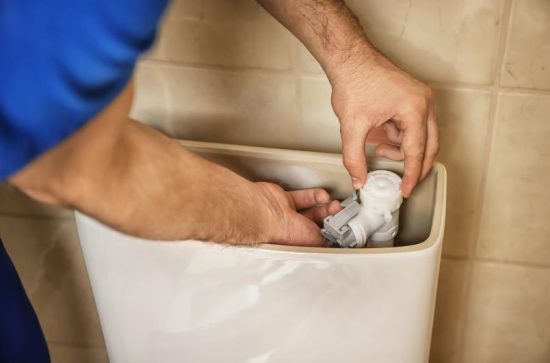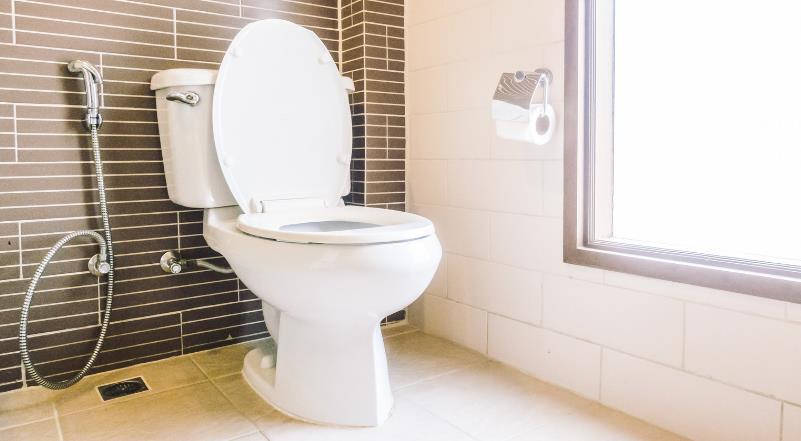Have you ever been startled by a high-pitched whistling sound from your bathroom? If the noise seems to be coming from your toilet, it’s not just a quirky inconvenience; it’s a symptom of an underlying issue in your toilet’s mechanisms. This whistling sound can be annoying, but luckily, it is typically easy to diagnose and fix. You understand why does my toilet whistle is the first step to restoring peace in your bathroom.
Identifying the Cause of the Whistling
1. Check the Fill Valve
Fill valves are frequently the source of whistling in toilets. The fill valve that situated inside the toilet tank, regulates how much water enters the tank following each flush. This valve may eventually wear down or get clogged with mineral deposits, making the water travel through it whistling. You can tell if the fill valve needs to be cleaned or replaced by looking for indications of wear or blockage. Frequent maintenance can stop the accumulation that causes whistling, such as inspecting and cleaning the fill valve. In many cases, replacing a worn-out or damaged valve is a straightforward procedure that may be done with simple tools.
2. Inspect the Float Mechanism

The float mechanism controls the tank’s water level alongside the fill valve. This part can force the fill valve to work harder and cause whistling if it is misaligned or faulty. To ensure that your toilet’s internal workings function correctly, ensure the float is adjusted to the appropriate height and moves freely. Manually changing the float usually involves twisting a screw adjustment or bending the float arm to the proper level. Making sure the float isn’t stuck or impeded by anything within the tank is crucial. Frequent inspections and maintenance help keep the toilet operating at its best and stop problems like whistling before they arise.
3. Examine Water Pressure
Whistling sounds occasionally have a connection to your home’s water pressure. Because toilets are made to function only within a specific pressure range, noise may result from using too much or too little pressure. Using a gauge, you may check and adjust the water pressure in your house as needed. Consulting with a plumber could be your best option if changing the pressure seems too difficult. In addition to preventing whistling, proper pressure ensures that other water fixtures in your house operate as intended. Installing a pressure-reducing valve can provide a long-term fix if the pressure is too high. On the other hand, if the pressure drop is shallow, a plumber might need to check for any underlying problems in your plumbing system.
4. Look for Worn Out Parts
Over time, parts of the toilet, such as gaskets and washers, can wear down and produce a range of noises, including whistling. These are often affordable and simple to replace parts. Frequent maintenance inspections can stop these problems from getting worse. Reviewing all toilet parts regularly is beneficial, especially before malfunctioning. This preventive measure can spare you time and money by averting future, more involved repairs. Furthermore, keeping these little components in good working order contributes to the general upkeep of your toilet’s operation and effectiveness.
5. Consider Professional Help

When the whistling continues after you’ve checked the previously indicated regions, it may be time to hire an expert. To locate and address complicated problems, plumbers can provide a more in-depth analysis of your plumbing system. A licensed plumber can identify issues that take time to be apparent to the typical homeowner since they have the equipment and knowledge to do so.
They can look for less evident problems that might impair the system’s functionality, such as internal pipe damage or clogs. Professional assistance may also guarantee that any repairs are made correctly, prolonging the life of your plumbing fittings. Calling in a professional can also provide peace of mind, knowing that someone with the right skills handles all aspects of your toilet’s function. Moreover, establishing a proper maintenance routine might help prevent future issues.
Simple Steps to Fix the Whistling
Once the source of the whistling has been located, repairing it is typically quite simple. If the fill valve is the issue, the noise can be instantly eliminated by replacing it with a new one. If the float mechanism has problems, it may be essential to replace it or alter its height. It might also be necessary to install a pressure-reducing valve or modify your current system to address issues with water pressure.
Routine maintenance, such as cleaning the fill valve and inspecting the toilet for worn-out parts, can prevent future incidents. Occasionally, tightening a loose connection or replacing a malfunctioning washer is all it takes to stop your toilet from making unpleasant noises.
Conclusion
When your toilet whistles, it’s usually a sign that part of its internal mechanism needs attention. Addressing this issue stops the noise and contributes to your toilet’s longevity and efficiency. By following these straightforward fixes, you can ensure that your bathroom remains a quiet and peaceful space. Remember, maintaining the components of your toilet is vital to keeping everything running smoothly.
Related Articles:
FAQs
Why does my toilet make a whistling sound?
A whistling toilet is typically caused by issues with the fill valve that controls the water flow into the tank. This can cause wear and tear, buildup of mineral deposits, or improper adjustments.
Can high water pressure cause my toilet to whistle?
High water pressure can force the fill valve and other components to work harder than usual, resulting in whistling. Adjusting the water pressure to within the recommended range for household plumbing often resolves this issue.
Is it expensive to fix a whistling toilet?
Most of the fixes for a whistling toilet are inexpensive. Replacing a fill valve or adjusting the float mechanism can often be done as a DIY project with parts available at a hardware store. However, adjusting the water pressure system-wide might require professional assistance.
How can I take precaution for my toilet from whistling in the future?
Regular maintenance is important to preventing plumbing issues, including whistling. Periodically check the fill valve, float mechanism, and overall water pressure. Also, clean the fill valve regularly to remove any mineral buildup.
Should I try to fix a whistling toilet myself or call a plumber?
If you are comfortable with basic home improvement tasks, you can fix a whistling toilet by replacing the fill valve or adjusting the float. However, if the problem involves water pressure or if you are unsure of the cause, it’s wise to call a professional plumber.

